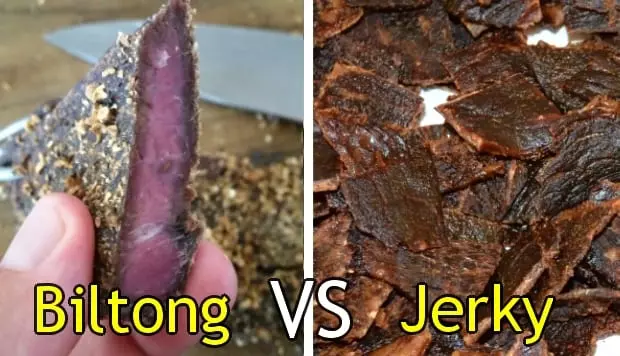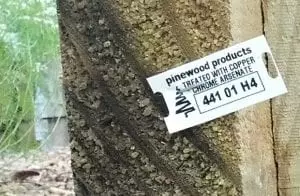With the rise in popularity of this amazing beef snack called biltong you might be wondering how it is different to beef jerky? Well, in a few words I can sum it up like this… Biltong is similar to beef jerky but nothing like it.
The other day, I was shocked to see Biltong on our local supermarket shelf for almost $90 per kilogram ($89.80) to be exact – what a rip-off! Just like jerky, biltong can be easily made at home and instead of paying 90 bucks a kg it can be homemade at under a quarter of that cost and even as low as 12-14 dollars depending on the grade of beef.

Biltong is dried beef just like most jerky products and both biltong and jerky taste great. They also make for excellent snacks at parties or just to eat for yourself in front of the TV etc… But that's where the similarities end between these two meat magnates because the actual process of drying and the taste are quite different.
Here are the main differences between Biltong and Beef Jerky
So, what are the main differences between biltong and beef jerky then? Well, that question can be summed up quite succinctly in the following sentences.
Origins – Whilst jerky originates from the USA, biltong rose to prominence in South Africa during the early days of Dutch settlement.
No sweetener is used in biltong at all – jerky usually has sugar or other sweeteners added.
Biltong is dried whole pieces of steak usually around 3/4 of an inch thick – jerky is cut into thin strips about 1/4 inch before marinating and drying.
Biltong is usually hung vertical to dry – jerky is placed flat out on trays.
Biltong is salted first – jerky is marinated but not usually salted before drying.
Biltong is usually made with the rump of the beast whereas jerky is typically made with any cut of beef but tender parts of the animal are preferred such as flank steak.
Biltong can be ready to eat when still not fully dried through whereas jerky is dried completely and "practically" cooked.
Biltong is dried at a lower temperature than jerky (biltong around 35C/95F and Jerky at 68C/155F)
Biltong can take up to 48 hours to cure – jerky takes about 8-12 hours max.
What is used to dry biltong and jerky?
You can get specialised biltong drying boxes, however, a food dehydrator such as the Excalibur Food Dehydrator (which is the brand I own) is perfect for making biltong or beef jerky. In fact, I've written an article containing a full guide on how to make biltong here if you would like to read it.
If you are interested in buying a food dehydrator, I got mine off eBay (AU) here – there are plenty of types and brands to choose from to suit your needs and price range.
For USA readers check out eBay USA and also Amazon USA has a huge selection of food dehydrators.
If you are a UK reader try eBay UK and Amazon UK.
Conclusion
Personally, I like both biltong and beef jerky types of dried meat but if I really had to choose one I probably would prefer biltong – hopefully I will never have to make that hard decision.












